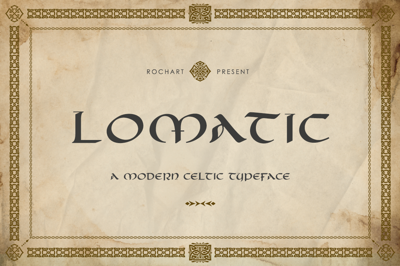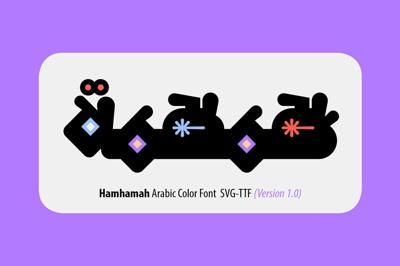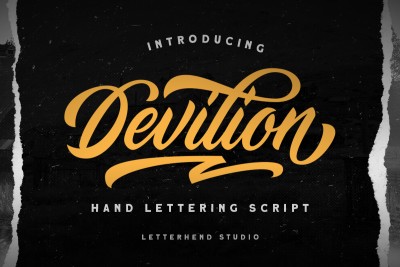Accessible Design: Dyslexia-Friendly Fonts
Accessible Design: Dyslexia-Friendly Fonts
Approximately 10-20% of the population has dyslexia, a learning difference that affects reading and language processing. As designers, we have the power to make content more accessible through thoughtful font choices and typography decisions. Here's everything you need to know about dyslexia-friendly design.
Understanding Dyslexia and Reading
Dyslexia isn't about seeing letters backwards—that's a common misconception. It's a neurological difference that affects how the brain processes written language. People with dyslexia may experience:
- Letter and word reversals (b/d, p/q, was/saw)
- Difficulty tracking lines of text
- Letters appearing to move, blur, or overlap
- Challenges distinguishing similar-looking letters
- Fatigue from reading that requires extra cognitive effort
Typography choices can either alleviate or exacerbate these challenges.
What Makes a Font Dyslexia-Friendly?
Several characteristics help fonts work better for dyslexic readers:
Distinct Letter Shapes
Each letter should have a unique, recognizable form. Letters that look similar cause confusion:
- Problematic: b/d, p/q, n/u, m/w
- Solution: Fonts where these letters have clearly different shapes
Varied Letter Heights
Letters with varying heights and depths are easier to distinguish than uniform ones. Ascenders and descenders create visual landmarks that help readers track.
Weighted Bottoms
Letters that are slightly heavier at the bottom provide stability and reduce the "floating" sensation some dyslexic readers experience.
Open Apertures
The openings in letters like a, e, c, and s should be clearly open, preventing them from looking like o or other closed forms.
Generous Spacing
Extra space between letters (tracking) and between lines (leading) reduces crowding and helps readers track text more easily.
Best Fonts for Dyslexia
Fonts Specifically Designed for Dyslexia
OpenDyslexic A free, open-source font specifically created for dyslexic readers. Features weighted bottoms and distinctive letter shapes. Available at opendyslexic.org.
Pros: Free, specifically designed for purpose, weighted letterforms Cons: Some readers find it too different or distracting
Dyslexie Font Professionally designed with input from dyslexic readers. Features slanted letters, varied heights, and larger openings.
Pros: Research-backed design, elegant appearance Cons: Paid license required for commercial use
Lexend Originally developed as Quicksand Dyslexia, now available on Google Fonts. Designed using principles from applied psychometrics.
Pros: Free, scientifically tested, professional appearance Cons: Newer font with less widespread adoption
Recommended Standard Fonts
Many everyday fonts work well for dyslexic readers without looking specialized:
Arial Clean, simple sans-serif with good letter distinction. Widely available and familiar.
Verdana Designed for screen readability with generous spacing and open letterforms. Excellent for digital content.
Comic Sans Despite its reputation in design circles, Comic Sans is genuinely helpful for many dyslexic readers. Its irregular, hand-drawn quality creates distinctive letter shapes.
Tahoma Similar to Verdana but slightly more condensed. Good balance between space efficiency and readability.
Century Gothic Geometric sans-serif with clean, distinctive letterforms. Modern appearance that's still accessible.
Calibri Microsoft's default font for good reason. Warm, friendly, and highly readable with good letter distinction.
Fonts to Avoid
Decorative and Script Fonts
Ornate, handwritten, or heavily stylized fonts create unnecessary cognitive load. Save these for occasional headlines, never for body text.
Serif Fonts (Sometimes)
While serif fonts work well for many readers, they can be problematic for some dyslexic readers. The decorative strokes can create visual noise. If using serifs, choose ones with clear, simple serifs like Georgia rather than elaborate ones like Garamond.
Italic Fonts
Slanted text is harder to read for many dyslexic readers. Use italic sparingly, only for brief emphasis, never for extended passages.
Condensed or Narrow Fonts
Compressed letterforms reduce the distinctiveness between letters. Stick with regular or extended widths.
Thin or Light Weights
Fonts with thin strokes can appear to disappear or be harder to focus on. Use regular or medium weights as minimum for body text.
Typography Best Practices
Font Size Matters
Larger text reduces reading difficulty. Recommended minimums:
- Web: 16-18px for body text
- Print: 12-14pt for body text
- Children's materials: Even larger—14-16pt minimum
Increase Line Spacing
Standard line spacing (leading) of 1.5 is minimum. For dyslexic readers, 1.5-2.0 works better:
- 16px font → 24-32px line height
- 12pt font → 18-24pt leading
Extra space prevents lines from appearing to merge together.
Expand Letter Spacing
Increase tracking (letter spacing) slightly. Adding 5-10% more space between characters reduces crowding:
p {
letter-spacing: 0.12em; /* 12% increase */
}
Generous Margins and Padding
White space around text blocks gives readers' eyes rest points and makes text less overwhelming. Use generous margins—at least 15-20% of page width.
Limit Line Length
Long lines make it hard to track from end back to beginning. Optimal line length: 50-70 characters per line (about 8-12 words).
Use narrower columns rather than full-width text blocks.
Avoid Justified Text
Justified alignment creates uneven word spacing that disrupts reading flow. Use left-aligned (ragged right) text instead.
Color and Contrast Considerations
Sufficient Contrast
High contrast between text and background is essential. Aim for WCAG AA standard minimum: 4.5:1 for normal text, 3:1 for large text.
But not too much: Pure black (#000000) on pure white (#FFFFFF) can be harsh. Slightly softer combinations work better:
- Dark gray (#333333) on off-white (#FAFAFA)
- Very dark blue on cream
- Dark brown on light beige
Colored Backgrounds
Some dyslexic readers prefer colored backgrounds:
- Cream or beige: Reduces glare, softer than white
- Light gray: Reduces contrast slightly
- Pale blue or green: Calming, reduces eye strain
Allow users to choose background colors if possible. What helps one person might bother another.
Avoid Color-Only Indicators
Never rely on color alone to convey information. Some dyslexic individuals also have color perception differences. Always combine color with text labels, icons, or patterns.
Layout and Formatting Tips
Clear Hierarchy
Use size, weight, and spacing to create obvious hierarchy. Readers should instantly recognize headings, subheadings, and body text.
Break Up Text
Long paragraphs are intimidating. Keep paragraphs short (3-5 sentences). Use:
- Subheadings every 2-3 paragraphs
- Bullet points for lists
- Bold for key concepts
- Line breaks between sections
Consistent Formatting
Predictable layout reduces cognitive load. Use the same formatting patterns throughout your content.
Avoid Text in Images
Text embedded in images can't be resized, and screen readers can't access it. Always use actual text when possible.
Interactive Design Considerations
Allow Font Customization
If building a website or app, let users adjust:
- Font size
- Font family
- Line spacing
- Background color
- Text color
These controls respect individual preferences and needs.
Avoid Moving or Flashing Text
Animations, scrolling text, or flashing elements create additional challenges for tracking and focus.
Provide Audio Alternatives
Text-to-speech functionality helps dyslexic readers access content through listening, which many find easier than reading.
Testing with Real Users
The best way to ensure your design works is testing with dyslexic readers:
- User testing sessions
- Feedback surveys
- Accessibility reviews
- A/B testing different font options
What theory suggests might not match real-world experience. Let actual users guide your decisions.
Common Myths Debunked
Myth: "Dyslexic fonts cure dyslexia" Reality: Fonts don't cure dyslexia. They can reduce reading difficulty and fatigue, but they're tools, not treatments.
Myth: "All dyslexic people benefit from the same fonts" Reality: Dyslexia manifests differently in each person. Preferences vary widely. Options and flexibility matter most.
Myth: "Dyslexia-friendly design looks childish" Reality: Professional, sophisticated design can absolutely be accessible. Clean typography benefits everyone.
Final Thoughts
Designing for dyslexia isn't about special accommodation—it's about good design that benefits everyone. Clear letterforms, generous spacing, and readable sizes make content more accessible for all users, regardless of reading ability.
Start with these principles:
- Choose fonts with distinct letter shapes
- Use adequate size (16px/12pt minimum)
- Increase line spacing (1.5-2.0)
- Keep line length moderate (50-70 characters)
- Use left alignment
- Provide sufficient contrast
- Break up text with white space
Accessible typography isn't a limitation—it's an opportunity to create better experiences for everyone. When you design with dyslexic readers in mind, you're designing better for all readers. That's the essence of inclusive design: solutions that help some people become improvements that benefit everyone.

![[UPDATED!] Juniper Bay Font Free Download [UPDATED!] Juniper Bay Font Free Download](https://freeforfonts.com/public/images/konu/resized/updated-juniper-bay-font_resized400px.avif)



